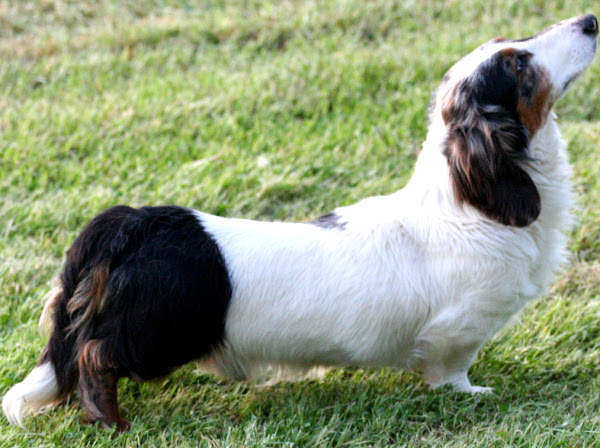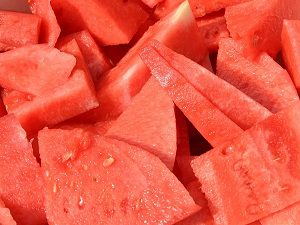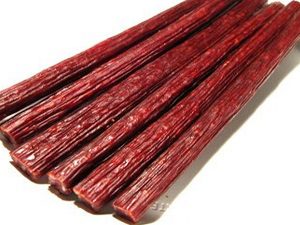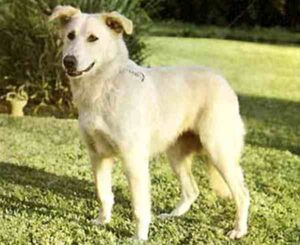The Dachshund dog is a short-leged, long-bodied and hound type breed of dog. It is also known by many other different names. It’s common nicknames are Badger dog, Dackel, Jamnik, Doxie, Weenie dog, Wiener dog, Sausage dog, Salsichinha, Bassotto, Sosis, Perro Salchicha, Worshond, Teckel, Taksis, Taksas, Mäyräkoira and Taksa.
The Dachshund dogs may be smooth-haired, wire-haired or long-haired. The breed was originated from Germany where it was known as the Badger dog. Dachs meaning badger and hund meaning dog.
Illustrations of dogs resembling Dachshunds date to the fifteenth Century, and documents from the sixteenth Century mention the ‘earth dog’, ‘badger creeper’, and ‘dachsel’.
Badger wasn’t the Dachshund’s only prey. The breed was also used on den animals such as foxes, and packs of Dachshunds trailed wild boar.
Those early Dachshunds varied greatly in size. The dogs used on badgers and boar weighed 30 to 35 pounds. Dachshunds used to hunt foxes and deer weighed 16 to 22 pounds, and smaller 12 pound Dachshunds hunted hares and weasels.
For a brief time in the early 20th century, 5-pound Dachshunds were used to bolt cottontail rabbits.[1]
The standard sized Dachshund dog was developed to scent, chase, and flush out badgers and other burrow-dwelling animals, while the miniature dachshund was bred to hunt small animals such as rabbits and mice. In the Western United States, they have also been used to track wounded deer and hunt prairie dogs.
Dachshunds also participate in conformation shows, field trials and many other events organized through pure-bred dog organizations such as the American Kennel Club (AKC). According to the AKC, the dachshund is ranked 12th in popularity among dog breeds in the United States in 2018.[2]
Dachshund Dog Characteristics
The Dachshund dogs are very beautiful with long and muscular body and with short stubby legs. The front paws of these dog are disproportionately large, being paddle-shaped and particularly suitable for digging.
The skin is loose enough not to tear while tunneling in tight burrows to chase prey. They have deep chest which provides appropriate lung capacity for stamina when hunting.
Its snout is long. According to the AKC standards for the breed, “scars from honorable wounds shall not be considered a fault” because the dachshund is a hunting dog.
Light-colored Dachshund dogs can sport amber, light brown, or green eyes (however, kennel club standards state that the darker the eye color the better). Dapple and double dapple Dachshund dogs can have multi-colored ‘wall’ eyes with fully blue, partially blue or patched irises due to the effect of the dapple gene on eye pigmentation expression.
There are actually three coat varieties of the Dachshund dog: smooth coat (short hair), long-haired and wire-haired. The longhaired Dachshunds have a silky coat and short featherings on legs and ears. Wire-haired Dachshunds are the least common coat variety in the United States, but it is the most common in Germany, and the most recent coat to appear in breeding standards.
The Dachshund dogs have a wide variety of colors and patterns (the most common one being red). Their base coloration can be single-colored, tan pointed, and in wire-haired dogs, a color referred to as wildboar. Patterns such as dapple, sable, brindle and piedbald also can occur on any of the base colors. The Dachshund dogs in the same litter may be born in different coat colors depending on the genetic makeup of the parents.
The Dachshund dog breed is bred and shown in two sizes: standard and miniature. A full-grown standard Dachshund dog averages 7.3 kg to 15 kg. While the miniature variety normally weights less than 5.4 kg. Average height of the mature dog is between 8 and 9 inches at the withers.

Temperament
The Dachshund dog is described as clever, lively and courageous to the point of rashness. The breed is bred for perseverance, which is another way of saying that it can be stubborn.
The breed has reputation for being entertaining and fearless, but what they want most is to cuddle with their people.
The Dachshund dog’s personality can also vary with coat type. Because the wirehaired Dachshunds have terrier in their background, they can be mischievous troublemakers. While the longhairs are calm and quiet, and smooths have a personality that lies somewhere in between.
Some mini Dachshunds can be nervous or shy, but this is not correct for the breed. You should avoid puppies that show these characteristics.
Although, temperament of the dog is affected by a number of factors, including heredity, training and socialization. Puppies with nice temperaments are curious and playful, willing to approach people and be held by them.
Like many other dogs, the Dachshund dogs also need early socialization. Exposure to many different people, sight, sounds and experiences are great ways, especially when they are young. Proper socialization helps to ensure that your Dachshund puppy grows to be a well-rounded dog.
Lifespan
Average lifespan of the Dachshund dog is between 12 and 15 years.
Feeding
How much a mature dog eats depends on it’s size, age, build, metabolism and activity level. Dogs are individuals, just like people, and they don’t all need the same amount of food.
The Dachshund dogs are smaller in size, but they are very active. So, their diet should be formulated for a smaller sized breed with high exercise needs.
Generally half to one and a half cup of high quality dog food will be enough for a mature dog. You can also consult with a vet in your area for better feeding recommendations.
Caring
Taking good care of the animals is very important for raising Dachshund dogs. You should always keep up with your dog’s regular vet checkups to detect any health concerns early. Your vet will be able to help you to develop a caring routine that will keep your dog healthy.
The Dachshund dogs have lot of stamina and energy. They love to take a walk or play outdoors with other dogs, and they like to hunt and dig.
They are also active inside the house and can do well in small living quarters so long as they get a moderate amount of daily exercise. Generally, two half-mile walks a day will be enough for them.
The Dachshund dog breed is not suited to living outdoors, and they should live in the home. These dogs can injure their backs jumping on and off furniture, so get a ramp or steps and teach them to use it if they want up on the sofa or bed. Always be careful to support the dog’s rear and it’s chest when you hold a Dachshund dog.
The Dachshund dogs can learn quickly if motivated properly. Use positive reinforcements such as food rewards or a favorite toy to hold their attention. And keep the training sessions short.
These dogs will quickly become bored if made to repeat the same exercise over and over. So, make the obedience practice fun and interesting.
The Dachshund dog excels as a watchdog, but it can be noisy. Minis, in particular, can be yappy. Keep this in mind especially if your dog will be living in an apartment or condo community.
You need to pay special attention to the droppy ears of these dogs for all varieties and sizes of the Dachshund dogs. Moisten a cotton ball with an ear cleaner and wipe the ears out weekly.
The long-haired variety must be brushed regularly to prevent mats from forming. They need to be bathed more often than the smooth variety.
While the wire-haired variety also require regular brushing, and they will need to have their coats ‘stripped’, two or three times a year. Other grooming needs include nail care and dental hygiene. Trim your dog’s nail once or twice a month.
Brush the teeth at least two or three times a week (daily is better). And as you groom your dog, check for sores, rashes or signs of infection such as redness, tenderness or inflammation on the skin, in the ears, nose, mouth an eyes, and also on the feet.
Health
The Dachshund dogs are generally healthy. But like all other dog breeds, they are also prone to certain health conditions.
Their common health problems include bloat, canine diabetes mellitus, cushings disease, deafness, epilepsy, intervertebral disc disease and progressive retinal atrophy. Always try to keep good contact with a vet in your area.
| Breed Name | Dachshund |
| Other Names | Also known by some other names such as Badger dog, Dackel, Jamnik, Doxie, Weenie dog, Wiener dog, Sausage dog, Salsichinha, Bassotto, Sosis, Perro Salchicha, Worshond, Teckel, Taksis, Taksas, Mäyräkoira and Taksa |
| Breed Size | Small |
| Height | Depends on the variety. Height of the standard variety is between 8 and 9 inches at the withers |
| Weight | Depends on the variety. A full-grown standard Dachshund dog averages 7.3 kg to 15 kg. While the miniature variety normally weights less than 5.4 kg. |
| Good as Pets | Yes |
| Climate Tolerance | All climates |
| Color | The Dachshund dogs have a wide variety of colors and patterns (the most common one being red). Their base coloration can be single-colored, tan pointed, and in wire-haired dogs, a color referred to as wildboar. Patterns such as dapple, sable, brindle and piedbald also can occur on any of the base colors. The Dachshund dogs in the same litter may be born in different coat colors depending on the genetic makeup of the parents. |
| Lifespan | Between 12 and 15 years or more |
| Good for Children | Yes |
| Rarity | Common |
| Country/Place of Origin | Germany |






